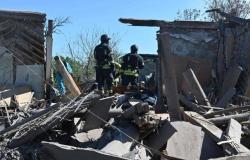The collaboration between the Cattaneo Dall’Aglio linguistic high school and Redacon continues through the Speakeasy column, edited directly by the students.
***
COVID-19: How it All Started
In late 2019, the world was thrust into an unprecedented crisis with the emergence of a novel coronavirus, now known as COVID-19. This infectious disease, ever affecting the respiratory system, quickly spreads across borders, disrupting lives, economies, and healthcare systems on a global scale.
 The exact origins of the pandemic are still a subject of ongoing investigation. However, it is widely believed that the virus likely originated in bats and was transmitted to humans through an intermediate host, possibly a wildlife species. The initial outbreak was linked to a seafood market in Wuhan, China, in late 2019. The exact details of the virus’s journey from animals to humans are still being studied, and international organizations and scientists are working to better understand its origins.
The exact origins of the pandemic are still a subject of ongoing investigation. However, it is widely believed that the virus likely originated in bats and was transmitted to humans through an intermediate host, possibly a wildlife species. The initial outbreak was linked to a seafood market in Wuhan, China, in late 2019. The exact details of the virus’s journey from animals to humans are still being studied, and international organizations and scientists are working to better understand its origins.
The first confirmed cases of COVID-19 were reported in Wuhan, China, in December 2019. Many of the first cases were linked to a seafood market in the city, but as the virus spread, it became evident that human-to-human transmission was occurring. The Chinese authorities took measures to control the outbreak, including closing the market and implementing quarantine measures.
Certainly, the virus has had significant psychological consequences and has brought about notable changes in our lives and behaviors. The main aspects were:
Mental Health Challenges: The pandemic has created new stressors, such as concerns about health, job security, and financial stability.
It has led to a surge in mental health issues, including anxiety, depression, and loneliness.
Lockdowns, social distancing, and quarantine measures have led to social isolation.
Grief and Loss: Many individuals have experienced the loss of loved ones due to COVID-19. Grief and mourning have been complicated by restrictions on funerals and memorials, making the grieving process more challenging.
Adaptation Many individuals and communities have found new ways to connect, support one another, and cope with the challenges. They have adopted new behaviors, such as wearing masks, practicing hand hygiene, and maintaining physical distance.
Increased Reliance on Technology: With lockdowns and social distancing, there has been a significant increase in the use of technology for work, education, and socializing. We experienced a global digitalization that still continues and develops.
In the early days of the COVID-19 pandemic, there were various opinions and responses from people around the world, such as:
Origin of the Virus: The question of the virus’s origin sparked various opinions and theories. Some believed it had a natural origin, while others suggested it might have come from a laboratory.
Vaccination: Opinions about COVID-19 vaccines also varied. Some people eagerly embraced vaccination as a way to end the pandemic, while others had concerns or hesitations regarding vaccine safety and efficacy.
It’s important to remember that public opinions and knowledge about COVID-19 have evolved over time as more information became known.
However it has tested our collective strength and resilience as a global community. It has taught us valuable lessons about the importance of preparedness, public health, and scientific collaboration in the face of unprecedented challenges. While the virus has left indelible marks on our lives, both in terms of the losses we’ve endured and the changes we’ve embraced, it has also demonstrated the remarkable capacity of humanity to adapt and innovate.
(Tania & Romina cl. 5q)
COVID-19: HOW IT ALL BEGAN
In late 2019, the world was thrust into an unprecedented crisis with the emergence of a new coronavirus, now known as COVID-19. This infectious disease, which severely affects the respiratory system, has rapidly spread across borders, disrupting lives, economies and healthcare systems on a global scale.
 The exact origins of the pandemic are still under ongoing investigation. However, it is widely believed that the virus probably originated in bats and was transmitted to humans via an intermediate host, perhaps a wild species. The initial outbreak was linked to a seafood market in Wuhan, China, in late 2019. The exact details of the virus’s journey from animals to humans are still being studied, and international organizations and scientists are working to better understand its origins.
The exact origins of the pandemic are still under ongoing investigation. However, it is widely believed that the virus probably originated in bats and was transmitted to humans via an intermediate host, perhaps a wild species. The initial outbreak was linked to a seafood market in Wuhan, China, in late 2019. The exact details of the virus’s journey from animals to humans are still being studied, and international organizations and scientists are working to better understand its origins.
The first confirmed cases of COVID-19 were reported in Wuhan, China, in December 2019. Many of the early cases were linked to a seafood market in the city, but as the virus spread, it became apparent that it was occurring a human-to-human transmission. Chinese authorities have taken measures to control the epidemic, including market closures and implementing quarantine measures.
Certainly, the virus has had significant psychological consequences and brought about notable changes in our lives and behaviors. The main aspects were:
Mental health challenges: The pandemic has created new stressors, such as concerns about health, job security and financial stability.
It has led to a surge in mental health problems, including anxiety, depression and loneliness.
Lockdowns, social distancing and quarantine measures have led to social isolation.
Grief and loss: Many people have experienced the loss of loved ones due to COVID-19. Grief and mourning have been complicated by restrictions on funerals and memorials, making the grieving process more challenging.
Adaptation Many individuals and communities have found new ways to connect, support each other, and navigate challenges. They adopted new behaviors, such as wearing masks, practicing hand hygiene and maintaining physical distance.
Increased reliance on technology: With lockdowns and social distancing, there has been a significant increase in the use of technology for work, education and socialising. We have experienced global digitalization that continues and develops.
In the early days of the COVID-19 pandemic, there were various opinions and responses from people around the world, such as:
Origin of the virus: The question of the origin of the virus has given rise to various opinions and theories. Some believed it had a natural origin, while others suggested it may have come from a laboratory.
Vaccination: Opinions on COVID-19 vaccines have also varied. Some people have enthusiastically embraced vaccination as a way to end the pandemic, while others have had concerns or hesitations about the vaccine’s safety and effectiveness.
It is important to remember that public opinions and knowledge about COVID-19 have evolved over time as more information has become available.
However, it has tested our collective strength and resilience as a global community. It has taught us valuable lessons about the importance of preparedness, public health, and scientific collaboration in the face of unprecedented challenges. While the virus has left indelible marks on our lives, both in terms of the losses we have suffered and the changes we have embraced, it has also demonstrated humanity’s remarkable ability to adapt and innovate.
(Tania & Romina cl. 5q)







